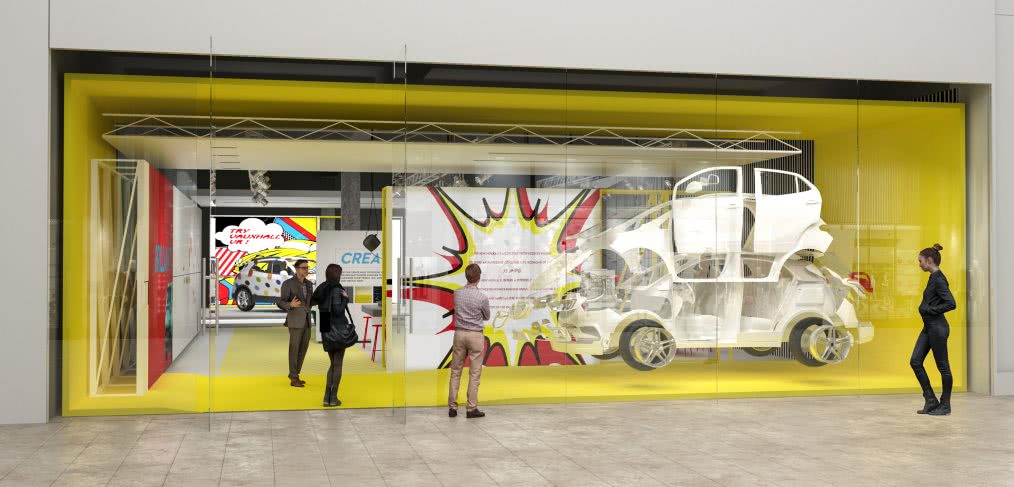
Driving Change in Automotive Retail
Our cities are increasingly playing host to modes of transit so numerous that it’s making local authorities’ and regulatory agencies’ heads spin: scooters, bikeshare users, independent cyclists, pedestrians, buses, taxis, Ubers, and car owners all vie for space on streets and sidewalks. But even as the nature of the commute begins to vary more widely, a stubborn loyalty to our cars remains: according to an Autotrader Car Buyer of the Future Study, more than 70% of people feel “very attached” or “somewhat attached” to their cars.
A LOVE/HATE RELATIONSHIP
So, people love their cars, but the data also show that they hate the car buying process. For one, it’s a bumpy road to purchase, as well as a significant expenditure of both time (six to eight hours, on average) and money. The underlying problem is that the traditional car buying experience is product-centric rather than customer-centric; so much so that 87% of Americans find something to dislike about car shopping at dealerships and, worse, 61% feel that they’re taken advantage of while they’re there.
We talk a lot about how the retail landscape, particularly in the realm of shopping malls, has changed in this world of clicks versus / and / or bricks. But at the core of all this change is the consumer, and it’s the consumer’s expectations and lifestyle that are shifting the shopping experience in powerful ways. And since not many people are comfortable purchasing an automobile online, sight unseen, the consumer is an even more powerful driver (no pun intended) in the automotive retail industry.
KEY DISRUPTORS
So what’s driving our drivers to change the way they think about cars? Let’s start with the Uber in the room: the sharing economy. The power of ride-hailing apps has emboldened many a millennial urbanite to live sans car payment, yet a 2017 McKinsey survey reveals that 67 percent of all US respondents prefer driving their own cars over using ride-hailing apps, and 63 percent aren’t interested in trading their vehicles for shared rides—even if they’re free. The trend indicates that global vehicle sales growth might be dampened, but not reversed, and that car sales in developing countries will outpace shared mobility’s impact over the next 15 years.
Perhaps more important, but less appreciated, is the sharing economy’s impact on the automobile itself: it used to be that sheer driving pleasure was paramount, but now, that emphasis has expanded to include passenger comfort. In the words of Henrik Wenders, vice president of marketing for Byton:
“In the next 100 years, it’s not about drivers and passengers: it’s about users. Every single seat in a vehicle is going to be equally important.”
Alongside the sharing economy is rapid innovation in mobility and digital technology. Thanks to Elon Musk, electric vehicles are on the rise (though growth has been tempered due to consumer anxiety regarding range and inconvenient recharging access). We’re also seeing brands move into tenant space in malls rather than occupy standalone storefronts—either to sell product, like the Teslas of the world, or for legacy brands, as a catalyst for lead generation and consumer education—thereby reaching new markets and audiences.
Meanwhile, the internet has empowered shoppers to become more knowledgeable about every product and service before they even think about darkening the door of a dealership or interacting with a brand ambassador. AutoTrader stats show that car buyers spend 59% of their time researching online, and 46% of them do so across multiple devices. Price comparison is the number one activity conducted online (71% of shoppers), while 46% use the internet to locate or find more information about a dealer.
FROM TRANSACTION TO EXPERIENCE
Taking all this on board means that the dealership is no longer just a showroom with a cast of stereotypically pushy salespeople. Instead, it becomes a customer experience center not unlike Apple’s retail stores, where the experience of trying out the products at one’s leisure is met with knowledgeable, human support when needed. These spaces educate the consumer while providing some level of interaction, whether that’s food and beverage offerings or hands-on engagement and experimentation with the product. Cadillac House, Mercedes Me, Stinger Salon by Kia and Intersect by Lexus are just a few examples of auto brands successfully pivoting toward the customer experience model.
Brands that understand customer experience have a few key things in common:
- They know that bricks and mortar retail is not dead, but it does need to be part of an omnichannel strategy that invites the consumer to engage with the brand in the manner of their choosing. Each channel complements, rather than threatens, the success of the other.
- They maintain as much control as possible from creation to distribution to create a holistic, consistent, relevant and compelling experience.
- They create a cult, a fan club, a community with niche products and lifestyle-focused marketing.
- They understand the value of the in-store / in-person experience.
In the end, it’s about providing effective, seamless segues from one channel to another and offering an in-store experience that enhances the consumer’s understanding of the product while getting them excited about being behind the wheel.
